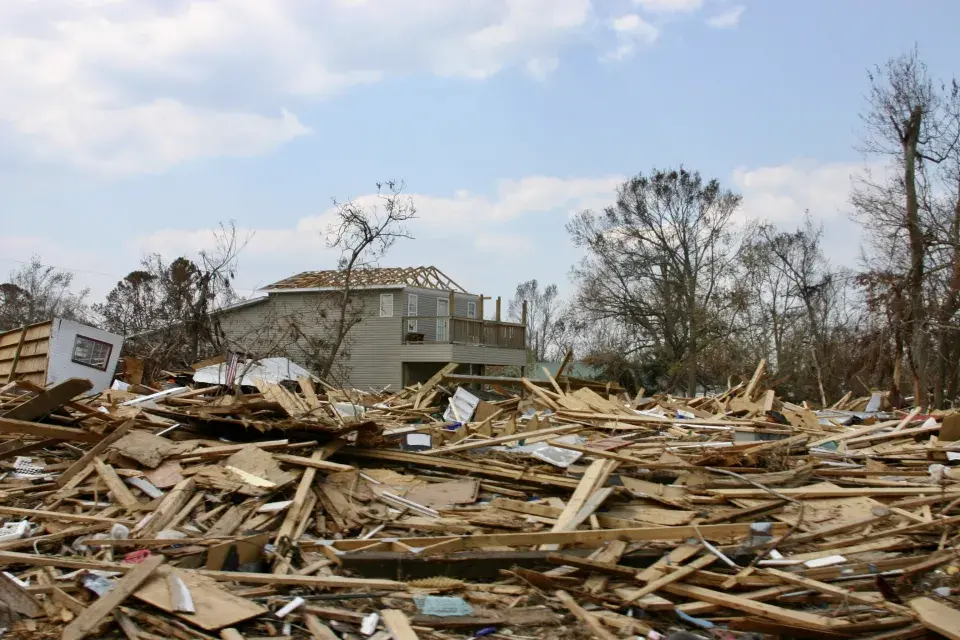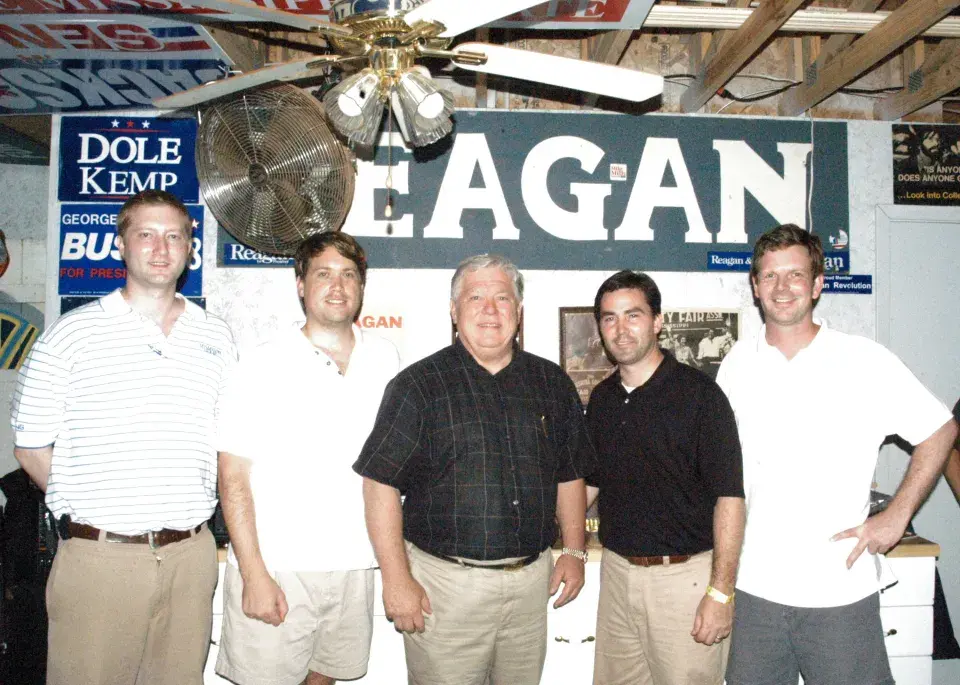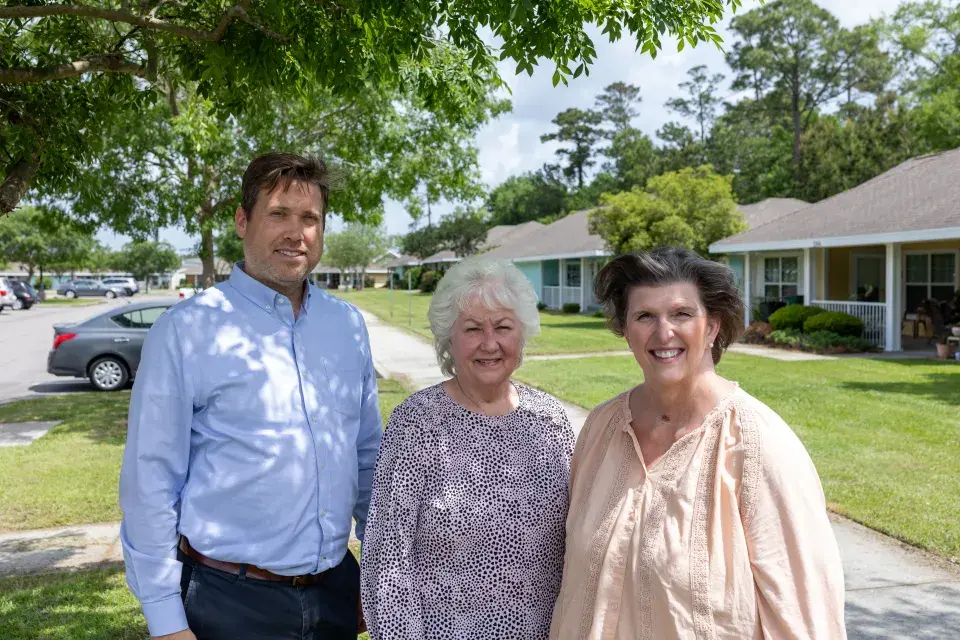When Hurricane Katrina hit the Gulf Coast, John Sullivan was just out of law school and “in limbo,” living at his parent’s place in Brookhaven, Mississippi, and mulling his career future. Sullivan and family were safe, but close enough to feel the shockwaves of the impact.
Within weeks, Sullivan was working for Mississippi Gov. Haley Barbour, helping recovery and rebuilding efforts in the most damaged parts of the state. The destruction that Sullivan witnessed along the Mississippi coast sharpened his desire to work in public policy and ultimately affordable housing.
“I didn’t grow up thinking about housing, and it wasn’t on my radar at all when I thought about my future career,” said Sullivan, who is Enterprise’s state and local policy director for the Gulf Coast. “But when you see that kind of devastation — 65,000 homes gone — it puts a sharp focus on the importance of having a home.”
We spoke with Sullivan about his work to help Mississippi recover from Hurricane Katrina, and how the experience has shaped his life and career, 20 years later.
Family connection in Mississippi I was raised in Brookhaven, a small town in the southwest corner of the state with a population of roughly 12,000 people. My parents are both native Mississippians, from a place called Louisville in Winston County. My dad started out as a high school football coach, landing at Brookhaven High School in the ’60s. My mom was an English teacher. They opened a small-town sporting goods store together after my dad left coaching. Then he got into politics and became mayor when I was in high school. My mom later served 12 years on the board of aldermen. That’s what I grew up around — sports, politics, public service, and small business. It all left a big impression on me and shaped how I thought about community.
Life in Mississippi before Hurricane Katrina Brookhaven was the kind of place where you knew everyone. After my dad left coaching, he ran that sporting goods store full-time, and my mom worked with him. It wasn’t just a business; it was a hub. I went to Millsaps College in Jackson, then law school at Ole Miss. Early on in law school, I figured out I didn’t want to go the traditional law firm route. My dad was working for Senator Thad Cochran at the time, and that had a big influence on me. So, I thought a public service route would be the most worthwhile for me.
Before Katrina hit I graduated from law school in May 2005, took the bar exam that summer, and was living at home. A couple days before Katrina hit, some friends from New Orleans evacuated the city and came up to Brookhaven to stay for a night. I remember them saying, “This could be it. This could destroy New Orleans.” And honestly, I didn’t really get it at the time.
When the storm came In Brookhaven, we were in the outer bands. It was windy, trees down everywhere, lots of debris. Our power went out and stayed out for about five days. I remember sitting there with a battery-powered radio just hours after the storm had passed, trying to pick up New Orleans stations. I could faintly make out one station say the levees had held and the city was okay. That obviously wasn’t true. We had no TV, no internet, just newspapers when they came. So, I didn’t see the images of people being rescued or the full devastation until much later. It was surreal to be that close but still in the dark.

Impact on Mississippi Gulf Coast People often focus on New Orleans, but the Mississippi Gulf Coast got devastated. Katrina was a massive storm, and it was slow-moving. Even though it made landfall as a Category 3, it had built up Category 5 storm surge while sitting out in the Gulf. That surge pushed 20 to 30 feet of water across 80 miles of Mississippi’s coastline. Entire communities were wiped out, including schools, homes, and downtown areas. We lost 65,000 homes. These weren’t vacation homes. These were real, lived-in, working-class homes. As Governor Barbour often described it, it looked like the hand of God just wiped the coastline clean.

Working on the recovery committee After the storm, I went up to DC for some networking, trying to find a job. But people there said, “If you want to be involved in politics, the real work is happening back home.” That stuck with me. My dad had met someone named Will Longwitz through his work, and Will was part of the new Governor’s Commission on Recovery, Rebuilding, and Renewal. They were just getting started and needed help. I jumped in. We worked fast—three months to gather input, hold public meetings, and come up with a plan. We brought in folks from the Congress for the New Urbanism, including Andrés Duany, to lead charettes. We submitted our report by the end of the year.
Six years working for the governor After that, I moved into the Governor’s Office of Recovery and Renewal. We were a small team tasked with overseeing all state recovery: housing, infrastructure, agency coordination. It was intense. We didn’t have a playbook. I wrote the governor’s annual Katrina recovery reports, worked on policy design, helped shape housing programs. We had some tough negotiation, especially around how recovery dollars were split between infrastructure like the Port of Gulfport and housing. Housing advocates and the Obama administration wanted different things. But we found a way to meet everyone’s goals. It was a high-stakes, high-pressure job, but one of the most meaningful things I’ve ever done.
Biggest Challenges Housing was the biggest beast. FEMA trailers were everywhere — we had 50,000 of them at the peak. Over 100,000 people were in temporary housing. Every day felt like the clock was ticking to get them into something permanent. Infrastructure programs were easier because they were more standardized. But housing recovery was a blank slate. We had to design new programs, take in tens of thousands of applications, and hire staff fast. We also realized we weren’t reaching the lowest-income people who were most at risk. So, we dug into the data, found the gaps, and created an Unmet Needs program for wind-damaged homes that hadn’t been covered by insurance or FEMA. The governor also committed to rebuilding all public housing, which we did.
How Katrina recovery shaped my career Before Katrina, housing wasn’t on my radar. But when you see that kind of devastation, you realize how central housing is to everything else. Without a home, nothing else works — no school, no job, no stability. That experience changed my whole trajectory. I found myself drawn to housing policy, community development, and public service. It’s what led me to where I am now, at Enterprise doing work that I find deeply meaningful and fulfilling.
What home means Home is peace of mind. It’s the place where you know your family is safe and you’re not worried about being evicted or displaced. You’re not stressed about whether you can afford it, or whether it’s going to flood. It’s your anchor that allows you to engage with everything else in your life, whether that’s your job, your kids’ school, or your community. When people don’t have that foundation, everything else starts to fall apart. That’s what Katrina taught me.


